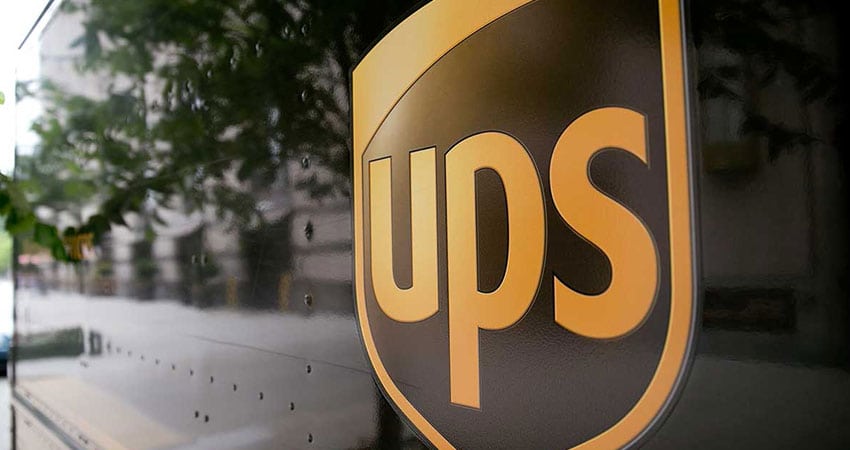UPS posted strong Q3 financial results, falling a bit short on revenue vs. the analyst consensus but beating on earnings, as the company was lauded for successfully making network adjustments to falling volumes, unlike rival FedEx’s report about a month ago.
The carrier is expecting peak season volume to be lighter, in line with industry analyst predictions, and come in later in December; an extra delivery day vs. 2021 will provide needed flexibility. The addition of automated equipment including bagging, robotic small sort induction and autonomous vehicles is expected to reduce the growth in cost per piece for Q4 below the prior quarter.
UPS reported net income of $2.58 billion or $2.96 a share in Q3, up from $2.33 billion or $2.65 a share a year ago. Adjusted EPS was $2.99, ahead of the FactSet consensus of $2.84, according to MarketWatch. Revenue was up 7.4% to $24.16 billion, a touch below the consensus figure of $24.31 billion. Average daily volume in the U.S. was down 1.5%.
Last week, UPS also announced a 6.9% general rate increase (GRI) to match the one from FedEx, both the largest ever. Unlike FedEx, UPS is sticking to its FY 2022 guidance.
“3Q results fit our view that UPS got ahead of the slowing freight cycle and has a better grip on costs than FedEx,” Cowen analyst Helane Becker said in a note, per MarketWatch. “The company encouragingly reaffirmed their [fiscal] 2022 guidance.”
UPS CEO Carol Tome lauded data, technology and innovation for helping improve efficiency in the quarter. For example, she said, 1,000 trailer loads per day were eliminated in the U.S., and on-time departures and arrivals improved 6.5%, as part of the company’s Total Service Plan. And in October, UPS completed the initial rollout of a smart package system driven by RFID label technology at 101 domestic facilities.
“We plan to combine the capabilities of our strong stand-alone digital services, including Roadie, Coyote, delivery solutions, UPS Capital and our partnership with CommerceHub, to create a powerful offering of logistics as a service,” Tome said, adding it’s part of the carrier’s new ‘Bigger and Bolder’ program. “And when we combine [that] with our integrated physical network, we believe we will be unstoppable.”
Growing its small-to-medium shipper channel is a major focus of UPS, and Tome said domestic SMB daily average volume grew 1.9% in Q3, making up 28.3% of the total. The company also had 3 million shippers in its Digital Access Program, a discount offering targeting SMBs, generating $1.6 billion in revenue and on track to exceed the FY goal of $2 billion.
“This year, we anticipate our volumes will peak later in December compared to last year, as we expect consumers will return to more pre-pandemic shopping behaviors,” Tome said. “While we will continue to use technology to match daily capacity with customer demand, we’re also optimizing air and ground volume to make room for new customers where we can add the most value.”
Nate Skiver, founder of parcel consultancy LPF Spend Management, saw that as a veiled reference to the continued shedding of unprofitable Amazon volume, handing it off to the U.S. Postal Service.
CFO Brian Newman said average daily B2C volume in Q3 was down 2.2%, due to certain contractual agreements with enterprise customers. B2B average daily volume was down 0.5%, he said, based on declines in manufacturing volumes; this was partially offset by retail B2B growth, driven by returns volume.
“U.S. domestic generated revenue of $15.4 billion, up 8.2%,” Newman said. “Revenue per piece increased 9.8%, more than offsetting the decline in volume. Our revenue quality efforts continue to deliver results.”
Capital expenditures for fiscal 2022 will be $5 billion, $500 million below plan, Newman said, mainly due to a decision to lease vs. purchasing some facilities. “This approach enables us to maintain higher levels of agility and further improve our overall capital structure,” he said.
Tome said UPS is looking to strike a balance between revenue per piece and productivity to help improve margins. In fact, she said, the company may be running efficiently enough to ladle some of that gravy along to customers and shareholders.
“We’re willing to give some of that back to our customers through a revenue share, because why not?” she said. “If we can increase delivery density, and we’re seeing some good proof in our pilots and now our live case, we’ll give some of that back because we should. I think about a third, a third, a third, a third for the customer, a third for the shareholder and a third for UPS.”
“Customers should remind UPS of this during contract negotiations,” Skiver quipped.

